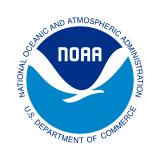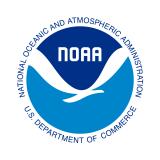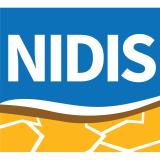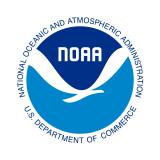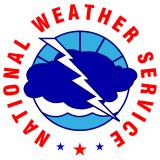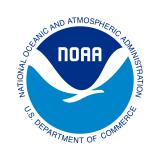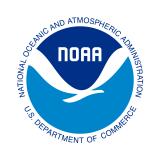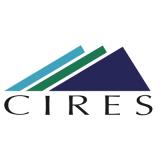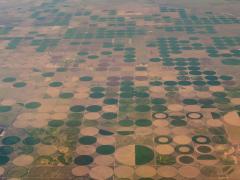NIDIS to Lead AMS Sessions on Drought Prediction, Drought Risk Communication
Next week, the American Meteorological Society (AMS) is hosting its 105th annual meeting in New Orleans, Louisiana.This year, the meeting will focus on the theme, "Towards a Thriving Planet: Charting the Course Across Scales." The theme focuses on providing “actionable science for society-at-large to chart a future course for a more hopeful and thriving planet” in the context of global environmental change.
NOAA’s National Integrated Drought Information System (NIDIS) is excited to co-chair two sessions during this year’s meeting: Advancements in Analysis and Prediction of Drought and Advances in Communicating the Risk of Drought and Cascading Hazards.
In addition, NIDIS staff will present in several drought-related sessions and will participate in two panel discussions: Advancing Subseasonal-to-Seasonal (S2S) Precipitation and Drought Predictions and Forecasts (part of the 13th Symposium on the Weather, Water, and Climate Enterprise) and Respectful Engagement and Intercultural Partnerships for Thriving Ecosystems and Communities (part of the Heather Lazrus Symposium).
Below, explore select AMS sessions hosted by NIDIS and its partners. You can also view all conference sessions on the AMS website.
Advances in Communicating the Risk of Drought and Cascading Hazards
Conference: Joint session as part of the 20th Symposium on Societal Applications: Policy, Research, and Practice and the 39th Conference on Hydrology
Co-Chairs: Meredith Muth, NOAA/NIDIS; Mary Angelica Painter, Natural Hazards Center, University of Colorado Boulder
Date/Time: Tuesday, January 14, 2025, 4:30–6:30 p.m.
Description: “This session will inform better communications of drought risk to support diverse communities as they proactively act to mitigate, plan for, and adapt to drought. Effective drought risk management relies on drought information conveyed in an actionable way that enables people to learn, adapt to drought, and prevent and mitigate drought risk. Yet, water and resource managers, information providers, and researchers face difficulty in communicating risk related to drought because it is a complex hazard that is highly variable in terms of onset, duration, extent, and impacts. Drought risk is influenced not only by hydrologic and atmospheric conditions, but also human factors such as management practices, land use, and community capacity to take certain actions. In addition, droughts can be compounded by the co-occurrence of other hazards (e.g., heatwaves, wildfires, flooding) and can, in turn, increase the risk of these cascading hazards, especially to already vulnerable people. Further, drought’s direct and indirect impacts can accumulate, negatively affecting health, livelihoods, and ecosystems.
In light of these complex challenges, there is a clear need for further social science and interdisciplinary research on effectively communicating drought risk to those planning for and responding to the impacts of drought.”
Advancements in Analysis and Prediction of Drought
Conference: 39th Conference on Hydrology
Chair: Molly Woloszyn, Cooperative Institute for Research in Environmental Sciences (CIRES), NOAA/NIDIS
Co-Chairs: Joshua K. Roundy, University of Kansas; Jason A. Otkin, Cooperative Institute for Meteorological Satellite Studies (CIMSS); Rachel Maya Robinson, CIRES, NOAA Physical Sciences Laboratory
Date/Time: Thursday, January 16, 2025, 8:30–10:30 a.m.
Description: “Drought is a multi-faceted phenomenon that challenges our current prediction capabilities, yet its environmental and economic consequences are among the most serious of all natural disasters. In the changing environment of a warming climate, drought is expected to increase in frequency, duration, and intensity at both regional and global scales, and this will result in increasing environmental security risk. Improving analysis and prediction of all drought types requires the use of multiple data sources, including in-situ and remote-sensing data, surface observations, and indicators of societal impact. …However, making significant improvements in monitoring and prediction will not only require advances in understanding drought mechanisms, but also of the societal impacts and how to better manage water resources. There are still many open scientific questions related to data fusion, integration of drought indicators, emerging social media data sources and the optimal combination of these data sets for providing insights to climate, environmental security, and societal changes with respect to drought events.”
Advancements in Subseasonal-to-Seasonal (S2S) Precipitation and Drought Predictions and Forecasts: Part I, Part II, and Panel Discussion
Conference: 13th Symposium on the Weather, Water, and Climate Enterprise
Co-Chairs: Christine Bassett, NOAA Weather Program Office; David Benson, NOAA Office of Oceanic and Atmospheric Research (OAR); Mark Olsen, NOAA/OAR
Date/Time: Monday, January 13, 2025, 8:30–10 a.m. (Part I), 10:45 a.m.–12 p.m. (Part II), and 1:45–3:30 p.m. (Panel Discussion)
Description: “This session focuses on the dynamic processes influencing subseasonal-to-seasonal (S2S) precipitation patterns and drought conditions, exploring recent advances in S2S prediction methodologies. Contributions are invited on the impact of large-scale oceanic, land, and atmospheric phenomena including, but not limited to, the Madden-Julian Oscillation, El Niño-Southern Oscillation (ENSO), and their impacts on precipitation and drought predictions.…This session also seeks to address the challenges of translating scientific advancements into actionable tools for sectors like water resource management, agriculture, and disaster preparedness. … This session aims to provide a comprehensive overview of current capabilities in predicting precipitation and drought conditions on S2S timescales and their implications for practical applications.”
Flash Drought Monitoring, Predictability, and Impacts in a Changing Climate
Conference: 39th Conference on Hydrology
Co-Chairs: Mike Hobbins, CIRES; Hailan Wang, NOAA Climate Prediction Center; Jason A. Otkin, CIMSS; Jordan I. Christian, University of Oklahoma; Andrew J. Hoell, NOAA Physical Sciences Laboratory
Date/Time: Thursday, January 16, 2025, 10:45–12 p.m.
Description: “Flash drought, characterized by its unusually rapid intensification, has garnered increasing attention in the physical sciences and has impacted communities in recent years due to its compounding and cascading physical causes and socioeconomic effects. We invite submissions that advance our ability to monitor, understand, and predict the complex interactions between terrestrial, atmospheric, and oceanic processes that can be used to anticipate the effects and improve early warning of flash droughts in our changing climate. We also invite submissions that further our understanding of anthropogenic effects on flash drought and our understanding of the linkages between flash drought and impacts on energy, food, health, and water security.”
For more information, view the full AMS conference schedule.


